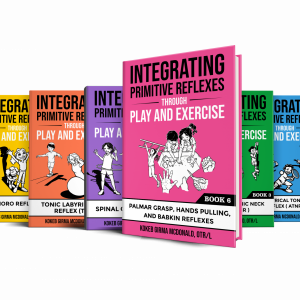The Asymmetrical Tonic Neck Reflex (ATNR) is a primitive reflex present in newborns and disappears as the child develops. Although it may seem like a small and insignificant reflex, the ATNR actually plays a crucial role in a child’s development.

Here are some of the benefits of the ATNR and how it contributes to a child’s growth and development.
- Assists with the birthing process – The ATNR is active during the birthing process and helps the baby to rotate its head to the correct position for delivery.
- Assists with reaching and exploration – The ATNR influences a baby’s ability to reach out and explore its environment, which is important for its overall development.
- Influences auditory processing skills – The ATNR also influences auditory processing skills such as depth, distance, localization, and figure-ground perception.
- Assists with cross-lateral movements – The ATNR plays a role in early cross-lateral movements such as rolling, creeping, crawling, and walking, which are important for gross motor coordination.
- Influences visual skills – The ATNR also influences visual skills such as depth perception, visual fixation, binocular vision, tracking, and more.
- Helps with fine motor skills – The ATNR contributes to the development of fine motor skills and eye-hand coordination, which are important for dexterity and manual tasks.
- Influences the vestibular system – The ATNR influences the vestibular system, which affects balance, spatial orientation, and posture.
- Influences gross motor coordination – The ATNR plays a role in gross motor coordination, which is important for overall movement and coordination.
- Critical for one-sided movement patterns – The ATNR is critical for one-sided movement patterns and dominance, such as eye, ear, arm, and leg dominance.
- Assists with speech and language development – The ATNR also plays a role in speech and language development.
- Enables asymmetrical-sided motor coordination – The ATNR enables asymmetrical-sided motor coordination between the right and left brain and helps with the development of other reflexes such as the Symmetrical Tonic Neck Reflex (STNR).
The Asymmetrical Tonic Neck Reflex (ATNR) is a crucial reflex that plays a significant role in a child’s growth and development. From assisting with the birthing process to influencing speech and language development, the ATNR is an important aspect of early childhood development that should not be overlooked.
Check out these resources from Reflex Integration Through Play™️ to support therapists and parents screen for and treat retained ATNR in a fun and functional way.
An Interactive Guide to the Asymmetrical Tonic Neck Reflex
A hands-on instructional guide offering parents and providers an invaluable tool for integrating therapeutic exercises into a child’s natural environment and compassionately understanding the developmental challenges related to it.

Are you a parent looking to support your child’s development? Check out our online course, How to Support Your Child’s Development at Home.

How to Support Your Child’s Development at Home
An accessible on-demand video course and guide to primitive reflex integration designed for parents and caregivers at home. Understand the basics of primitive reflexes and learn simple and fun exercises you can do with your child.





